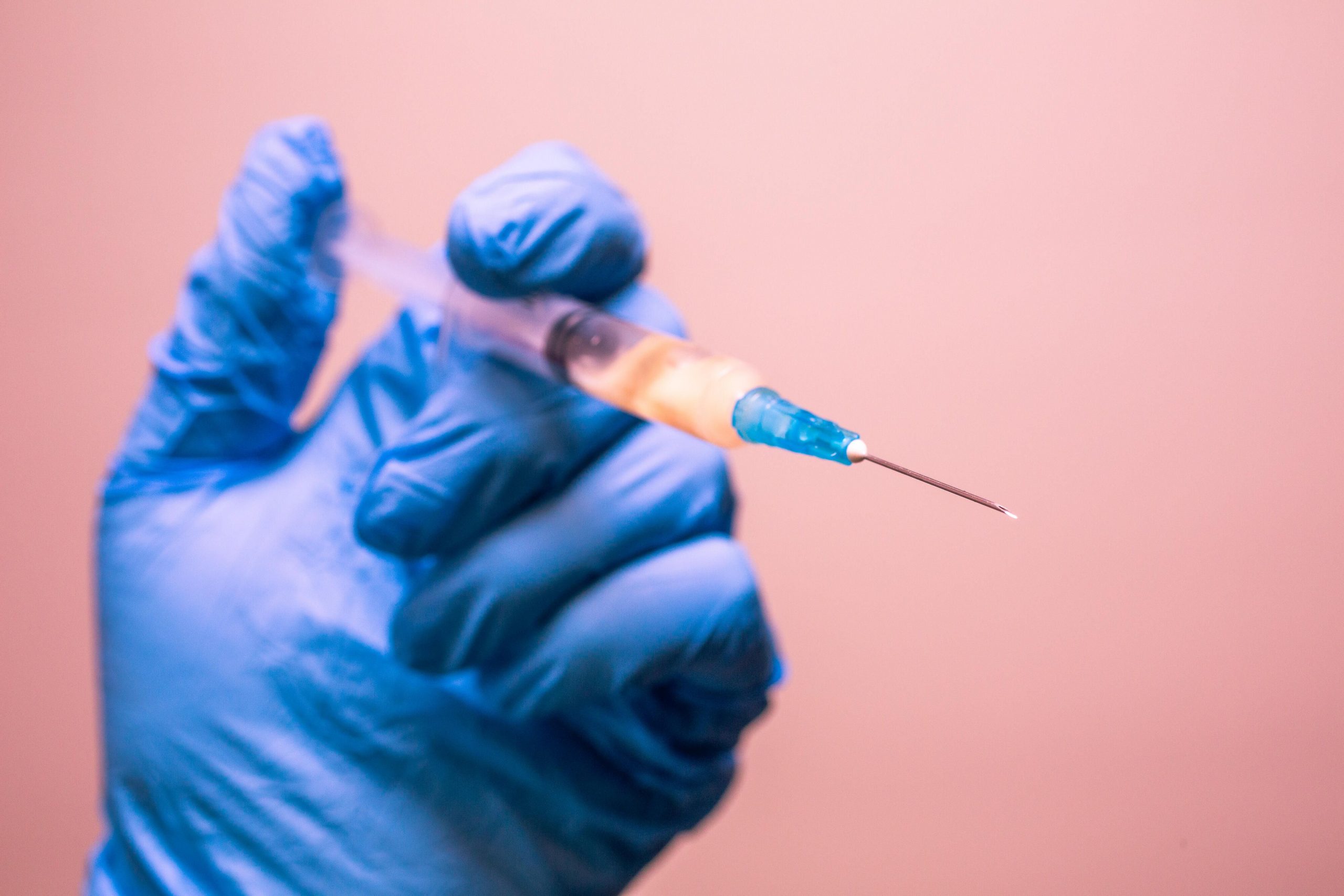Technologies
Delta variant: Could COVID vaccine boosters be here sooner than we thought?
With breakthrough infections in fully vaccinated people, the debate is over whether booster shots are needed to protect against the highly contagious strain.

During the third week of July, the World Health Organization reported a 131% increase in new COVID cases in the US. With the delta variant of the coronavirus becoming the dominant strain, pharmaceutical giant Pfizer said it’s working on a booster shot for its COVID-19 vaccine. To prepare for the possibility, the US Centers for Disease Control and Prevention said it’s weighing a third shot for immune-compromised people.
In a July 8 press release, Pfizer said a third shot of its vaccine would enhance the immunity of those who’ve already received the first two vaccine shots. In addition to creating a booster for its existing vaccine, the drugmaker said it would formulate a new version of its COVID-19 vaccine to target the delta variant. The CDC and the Food and Drug Administration responded with a joint statement the same day saying that fully vaccinated Americans «do not need a booster shot at this time.»
But that was all before the CDC’s most recent internal document confirmed in late July that vaccinated people can both contract the highly contagious delta variant and easily spread it. Those recent findings were behind the CDC’s shift in its mask guidance, which now recommends indoor mask use for everyone in areas with high transmission rates. The debate over mask use and vaccine boosters underscores how scientists and other health experts continue to grapple with the uncertainties of COVID-19.
Here’s what we know about Pfizer’s plans for a booster, and why the CDC and FDA caution against it, at least for now.
What are Pfizer’s plans for a COVID-19 booster shot?
Along with Moderna, Pfizer’s current two-dose vaccine provides effective protection against all known variants of COVID-19, including the delta variant. Studies have shown the Pfizer vaccine to be over 90% effective against the virus. But Pfizer also said its own research showed a third booster of its current vaccine increased antibody levels five to 10 times higher over its two-dose shots. The company noted its results have not been published or peer-reviewed.
Pfizer said it believes the level of protection the two doses of its vaccine provide can decrease over time, and a third booster dose may be needed «within six to 12 months» after a person is fully vaccinated. To prepare for the booster, Pfizer is testing both the effectiveness of a third dose of its current vaccine and working on an updated version targeting the delta variant. Pfizer said it would begin clinical trials on the booster this month as it seeks approval from government regulators for a third dose.
The company says a third shot given at least six months after the second shot in its original vaccine series would enhance protection against the delta variant, which has been known to infect fully vaccinated people.
What are the CDC and FDA saying in response?
«People who are fully vaccinated are protected from severe disease and death, including from the variants currently circulating in the country such as Delta,» the CDC and FDA said in a July 8 joint statement, without naming Pfizer. The government agencies emphasized the need for all eligible people to receive full doses of one of the approved vaccines, all of which are free.
The CDC and FDA said the question of a booster requires extensive scientific data and doesn’t depend on the input from pharmaceutical companies alone. «Virtually all COVID-19 hospitalizations and deaths are among those who are unvaccinated,» the statement mentioned, adding that the agencies will approve booster doses «if and when the science demonstrates that they are needed.»
According to a July 23 article in The New York Times, there is a growing consensus among Biden administration health officials that older individuals and those with compromised immune systems may, in fact, need a third shot. The same article notes that the CDC is exploring options to administer third doses even prior to authorization.
Is Moderna also planning to develop a booster shot?
While scientists and public health officials continue to study if those who are fully vaccinated will need a booster shot, Moderna said — along with Pfizer — it is moving ahead and exploring the need for a third shot.
Would the booster shot be free?
The current one-dose vaccine shot from Johnson & Johnson and two-dose versions from Moderna and Pfizer are free to anyone who wants to get vaccinated. According to the Biden administration, COVID-19 booster shots will also be free, if and when they’re approved.
Is it a good idea to mix and match COVID vaccines?
The CDC doesn’t recommend mixing and matching vaccines from the different makers, saying it hasn’t evaluated the effectiveness of mixing vaccine doses and that the «vaccines are not interchangeable.»
However, other global health agencies and countries are testing administered vaccines from two different manufacturers. In England, for example, a recent study found that those who received a first dose of the AstraZeneca vaccine and a second of Pfizer had a higher immune response than those who received two doses of the AstraZeneca vaccine.
While we wait to see how the situation develops, here’s what we know about the delta variant, more about COVID-19 boosters and if you need to continue to wear a mask.
The information contained in this article is for educational and informational purposes only and is not intended as health or medical advice. Always consult a physician or other qualified health provider regarding any questions you may have about a medical condition or health objectives.
Technologies
How to Get Verizon’s New Internet Plan for Just $25 Per Month
Technologies
This $20K Humanoid Robot Promises to Tidy Your Home. But There Are Strings Attached
The new Neo robot from 1X is designed to do chores. It’ll need help from you — and from folks behind the curtain.

It stands 5 feet, 6 inches tall, weighs about as much as a golden retriever and costs near the price of a brand-new budget car.
This is Neo, the humanoid robot. It’s billed as a personal assistant you can talk to and eventually rely on to take care of everyday tasks, such as loading the dishwasher and folding laundry.
Neo doesn’t work cheap. It’ll cost you $20,000. And even then, you’ll still have to train this new home bot, and possibly need a remote assist as well.
If that sounds enticing, preorders are now open (for a mere $200 down). You’ll be signing up as an early adopter for what Neo’s maker, a California-based company called 1X, is calling a «consumer-ready humanoid.» That’s opposed to other humanoids under development from the likes of Tesla and Figure, which are, for the moment at least, more focused on factory environments.
Neo is a whole order of magnitude different from robot vacuums like those from Roomba, Eufy and Ecovacs, and embodies a long-running sci-fi fantasy of robot maids and butlers doing chores and picking up after us. If this is the future, read on for more of what’s in store.
Don’t miss any of our unbiased tech content and lab-based reviews. Add CNET as a preferred Google source.
What the Neo robot can do around the house
The pitch from 1X is that Neo can do all manner of household chores: fold laundry, run a vacuum, tidy shelves, bring in the groceries. It can open doors, climb stairs and even act as a home entertainment system.
Neo appears to move smoothly, with a soft, almost human-like gait, thanks to 1X’s tendon-driven motor system that gives it gentle motion and impressive strength. The company says it can lift up to 154 pounds and carry 55 pounds, but it is quieter than a refrigerator. It’s covered in soft materials and neutral colors, making it look less intimidating than metallic prototypes from other companies.
The company says Neo has a 4-hour runtime. Its hands are IP68-rated, meaning they’re submersible in water. It can connect via Wi-Fi, Bluetooth and 5G. For conversation, it has a built-in LLM, the same sort of AI technology that powers ChatGPT and Gemini.
The primary way to control the Neo robot will be by speaking to it, just as if it were a person in your home.
Still, Neo’s usefulness today depends heavily on how you define useful. The Wall Street Journal’s Joanna Stern got an up-close look at Neo at 1X’s headquarters and found that, at least for now, it’s largely teleoperated, meaning a human often operates it remotely using a virtual-reality headset and controllers.
«I didn’t see Neo do anything autonomously, although the company did share a video of Neo opening a door on its own,» Stern wrote last week.
1X CEO Bernt Børnich told her that Neo will do most things autonomously in 2026, though he also acknowledged that the quality «may lag at first.»
The company’s FAQ says that for any chore request Neo doesn’t know how to accomplish, «you can schedule a 1X Expert to guide it» to help the robot «learn while getting the job done.»
What you need to know about Neo and privacy
Part of what early adopters are signing up for is to let Neo learn from their environment so that future versions can operate more independently.
That learning process raises privacy and trust questions. The robot uses a mix of visual, audio and contextual intelligence — meaning it can see, hear and remember interactions with users throughout their homes.
«If you buy this product, it is because you’re OK with that social contract,» Børnich told the Journal. «It’s less about Neo instantly doing your chores and more about you helping Neo learn to do them safely and effectively.»
Neo’s reliance on human operation behind the scenes prompted a response from John Carmack, a computer industry luminary known for his work with VR systems and the lead programmer of classic video games including Doom and Quake.
«Companies selling the dream of autonomous household humanoid robots today would be better off embracing reality and selling ‘remote operated household help’,» he wrote in a post on the X social network (formerly Twitter) on Monday.
1X says it’s taking steps to protect your privacy: Neo listens only when it recognizes it’s being addressed, and its cameras will blur out humans. You can restrict Neo from entering or viewing specific areas of your home, and the robot will never be teleoperated without owner approval, the company says.
But inviting an AI-equipped humanoid to observe your home life isn’t a small step.
The first units will ship to customers in the US in 2026. There is a $499 monthly subscription alternative to the $20,000 full-purchase price, though that will be available at an unspecified later date. A broader international rollout is promised for 2027.
Neo’s got a long road ahead of it to live up to the expectations set by Rosie the Robot in The Jetsons way back when. But this is no Hanna-Barbera cartoon. What we’re seeing now is a much more tangible harbinger of change.
Technologies
I Wish Nintendo’s New Switch 2 Zelda Game Was an Actual Zelda Game
Hyrule Warriors: Age of Imprisonment has great graphics, a great story and Zelda is actually in it. But the gameplay makes me wish for another true Zelda title instead.

I’ve never been a Hyrule Warriors fan. Keep that in mind when I say that Nintendo’s new Switch 2-exclusive Zelda-universe game has impressed me in several ways, but the gameplay isn’t one of them. Still, this Zelda spinoff has succeeded in showing off the Switch 2’s graphics power. Now can we have a true Switch 2 exclusive Zelda game next?
The upgraded graphics in Tears of the Kingdom and Breath of the Wild has made the Switch 2 a great way to play recent Zelda games, which had stretched the Switch’s capabilities to the limit before. And they’re both well worth revisiting, because they’re engrossing, enchanting, weird, epic wonders. Hyrule Warriors: Age of Imprisonment, another in the Koei-Tecmo developed spinoff series of Zelda-themed games, is a prequel to Tears of the Kingdom. It’s the story of Zelda traveling back in time to ancient Hyrule, and the origins of Ganondorf’s evil. I’m here for that, but a lot of hack and slash battles are in my way.
A handful of hours in, I can say that the production values are wonderful. The voices and characters and worlds feel authentically Zelda. I feel like I’m getting a new chapter in the story I’d already been following. The Switch 2’s graphics show off smooth animation, too, even when battles can span hundreds of enemies.
But the game’s central style, which is endless slashing fights through hordes of enemies, gets boring for me. That’s what Hyrule Warriors is about, but the game so far feels more repetitive than strategic. And I just keep button-mashing to get to the next story chapter. For anyone who’s played Hyrule Warriors: Age of Calamity, expect more of the same, for the most part.
I do like that the big map includes parts in the depths and in the sky, mirroring the tri-level appeal of Tears of the Kingdom. But Age of Calamity isn’t a free-wandering game. Missions open up around the map, each one opening a contained map to battle through. Along the way, you unlock an impressive roster of Hyrule characters you can control.
As a Switch 2 exclusive to tempt Nintendo fans to make the console upgrade, it feels like a half success. I admire the production values, and I want to keep playing just to see where the story goes. But as a purchase, it’s a distant third to Donkey Kong Bananza and Mario Kart World.
Hyrule Warriors fans, you probably know what you’re probably in for, and will likely get this game regardless. Serious Zelda fans, you may enjoy it just for the story elements alone.
As for me? I think I’ll play some more, but I’m already sort of tuning the game out a bit. I want more exploration, more puzzles, more curiosity. This game’s not about that. But it does show me how good a true next-gen Zelda could be on the Switch 2, whenever Nintendo decides to make that happen.
-

 Technologies3 года ago
Technologies3 года agoTech Companies Need to Be Held Accountable for Security, Experts Say
-

 Technologies3 года ago
Technologies3 года agoBest Handheld Game Console in 2023
-

 Technologies3 года ago
Technologies3 года agoTighten Up Your VR Game With the Best Head Straps for Quest 2
-

 Technologies4 года ago
Technologies4 года agoVerum, Wickr and Threema: next generation secured messengers
-

 Technologies4 года ago
Technologies4 года agoBlack Friday 2021: The best deals on TVs, headphones, kitchenware, and more
-

 Technologies4 года ago
Technologies4 года agoGoogle to require vaccinations as Silicon Valley rethinks return-to-office policies
-

 Technologies4 года ago
Technologies4 года agoOlivia Harlan Dekker for Verum Messenger
-

 Technologies4 года ago
Technologies4 года agoiPhone 13 event: How to watch Apple’s big announcement tomorrow
